For the past few days, I’ve been trying to determine — yet again, with new criteria — how much read noise is necessary to properly dither an analog to digital converter of a given precision. Specifically, I’m trying to figure out what the relationship is between dither and quantizing precision when resolving detail is the main criterion. The conclusion has been that, just as for the avoidance of posterization ( see here, here, and here), half a least-significant bit (LSB) rms was enough Gaussian noise for most purposes. For critical judgements, it looked like 0,7 bits was slightly better.
We used test targets for the past few days. Now I’m doing to see what happens with a natural scene, specifically, this one:
This image has fine detail along the ridge line, and, since it’s going to be images on a simulated 250 pixel wide sensor, fine detail in the entire unshadowed part of the foreground.
Here are some details of the camera simulator parameters used to test the various ADC precisions and noise levels:
Other camera simulator details:
- f/2 diffraction-limited lens
- 450, 550, and 650 nm light
- 4.88 um pixel pitch, 250 pixels wide
- 30:1 presampling resolution (7500 pixels wide)
- Adobe RGB GBRG CFA
- 100% fill factor
- AHD demosaicing
- Noise patterns are the same for all images, appropriately scaled.
- Images enlarged to 300% of original size (750 pixels wide) for posting here.
- Full range input image, so adding noise to the simulated capture can exceed the camera’s range
- Values below the black point are clipped
- Values above full scale are clipped
Here’s a set with noise equal to half an LSB of the 3 bit converter, a full LSB for the 4 bit converter, and 2 LSBs for the 5 bit converter. Thus the noise voltage remains the same if the full scale voltage remains the same, regardless of the precision of the ADC:
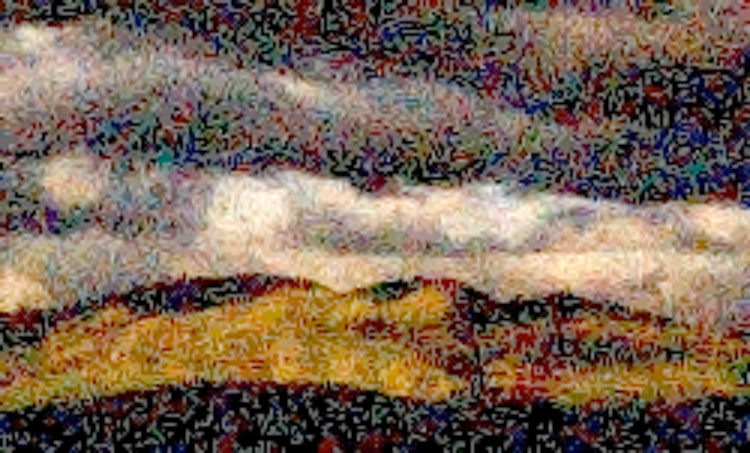
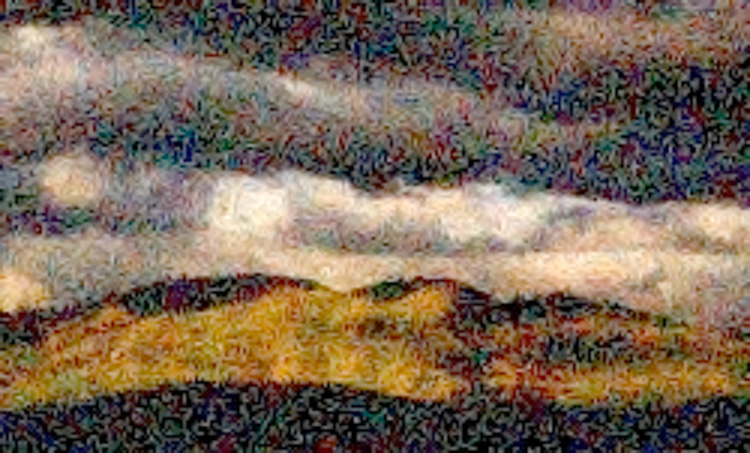
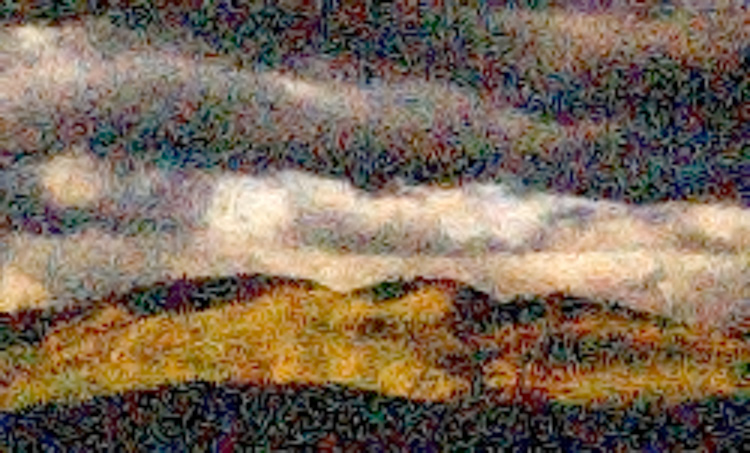
Increasing the dither a bit, to 0.7 LSB of the 3 bit converter, 1.4 LSB for the 4 bit converter, and 2.8 LSBs for the 5 bit converter:
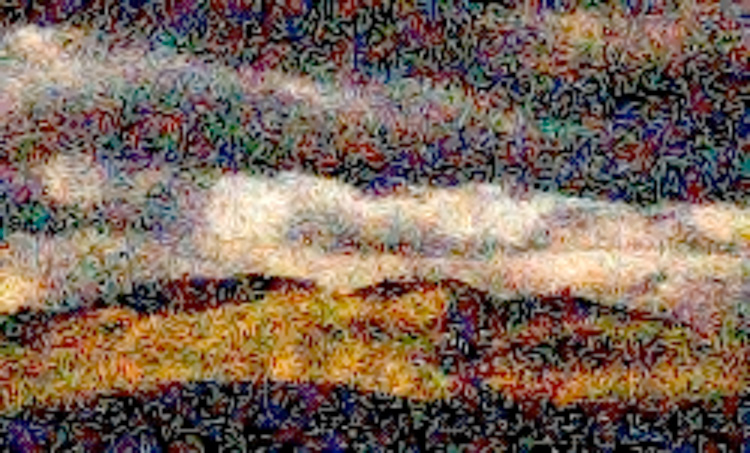
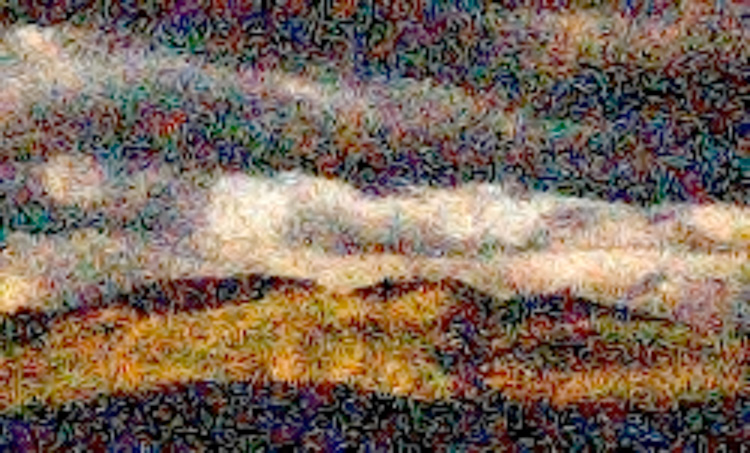
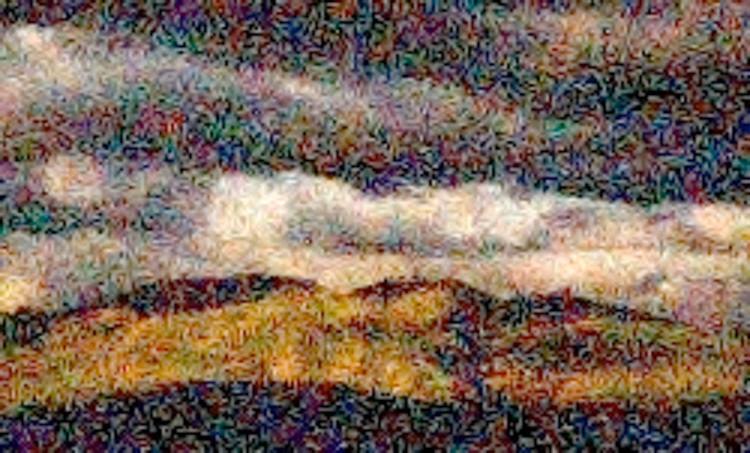
Increasing the dither to 1 LSB of the 3 bit converter, 2 LSB for the 4 bit converter, and 4 LSBs for the 5 bit converter.
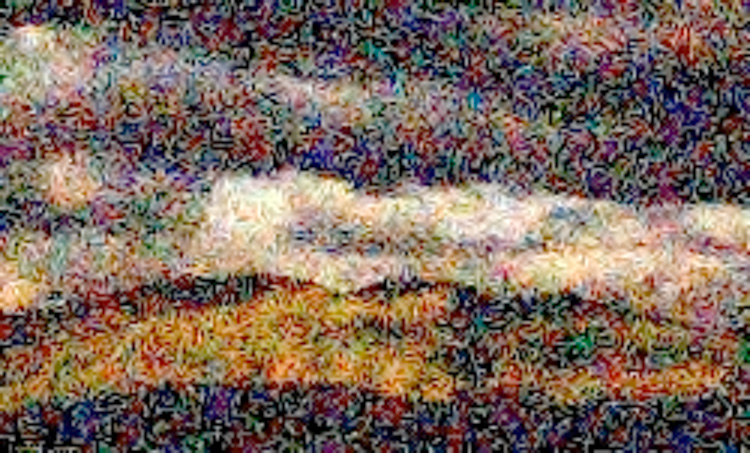
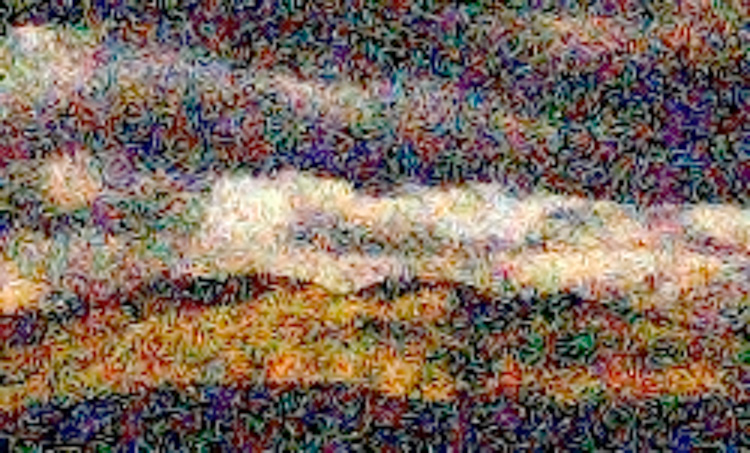
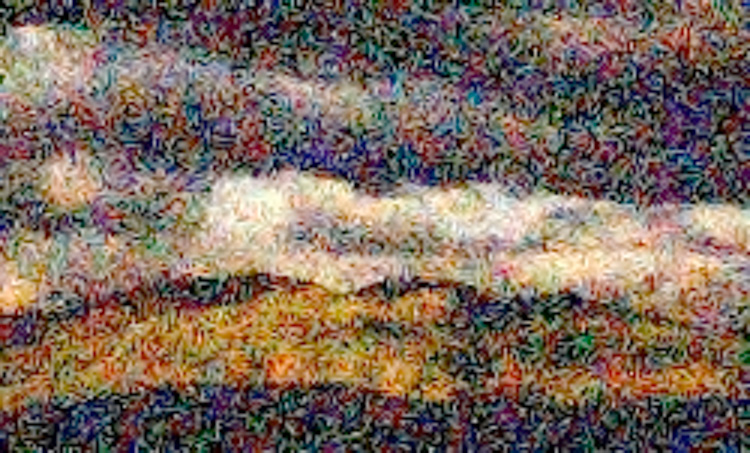
I find that there is even less to distinguish among the images in each of the three sets than with the text targets. As before, the noise is rendered less objectionable with finer quantizing.
If I keep working on this project, I expect the estate of Georges Seurat is going to get on my case.
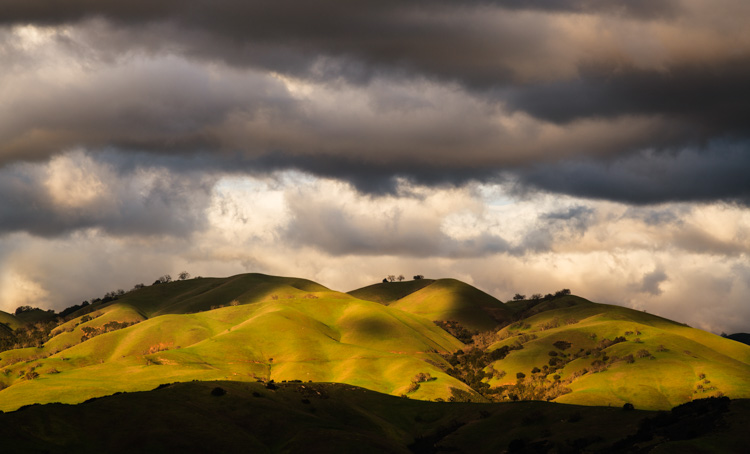
Jack Hogan says
Ok Jim, I am convinced, 0.7LSB it is. Now what about your gentleman friend?